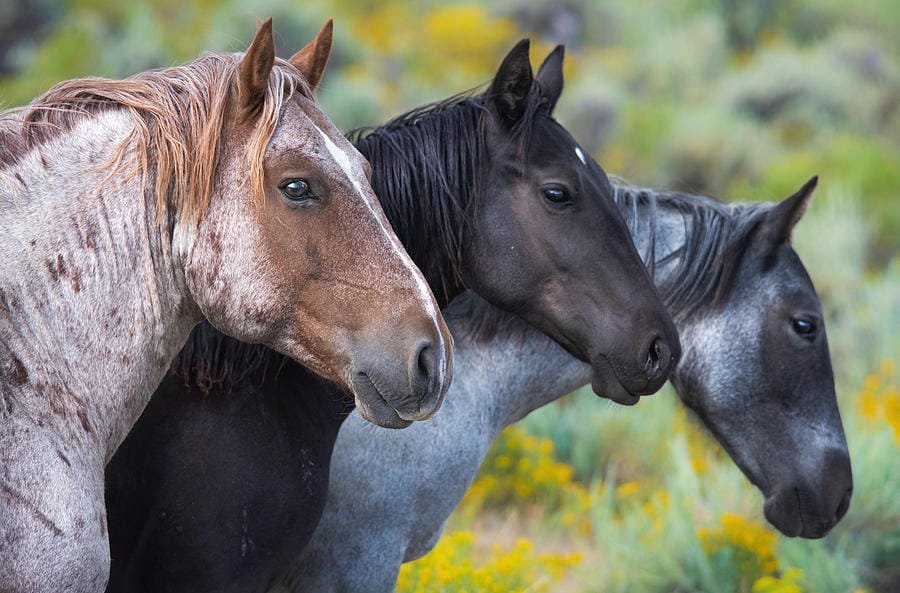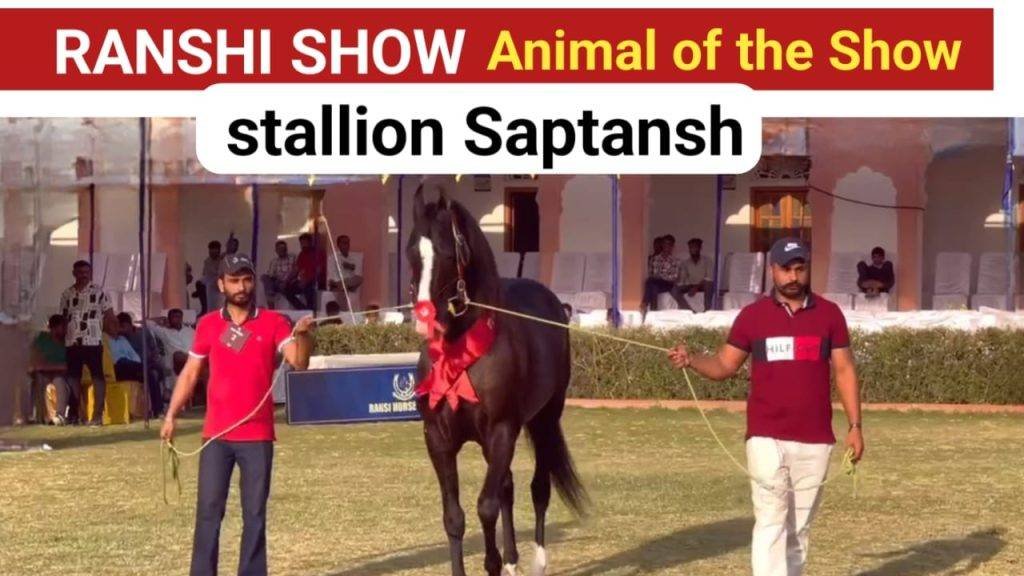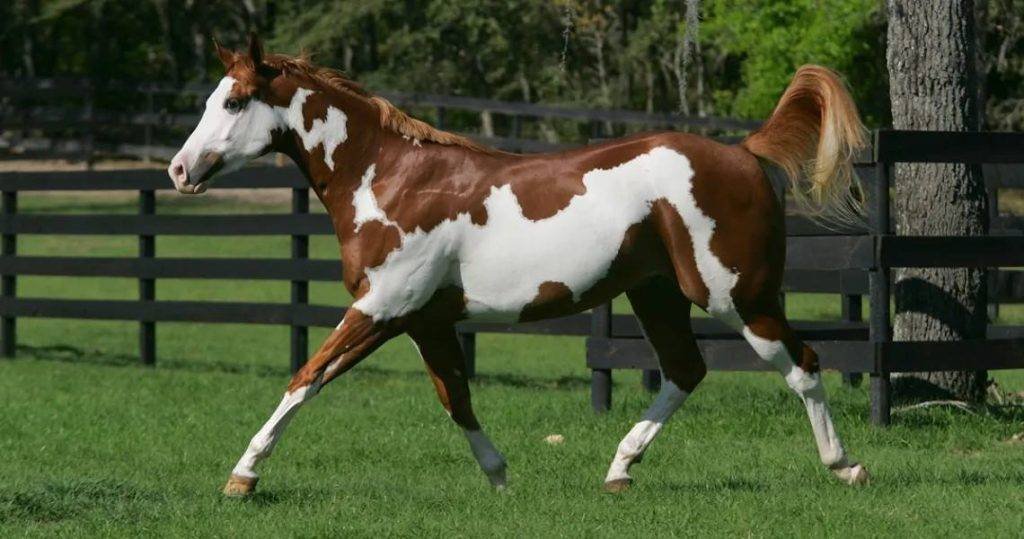Each breed has its own distinctive traits, history, and significance, reflecting the diverse equestrian heritage of the Indian subcontinent.
Horses have played a pivotal role in the cultures and histories of various regions in India, particularly in the states of Rajasthan and Gujarat, as well as in Sindh, Pakistan. Among the many breeds that have captured the hearts and imaginations of horse enthusiasts are the Marwari, Kathiyawadi, and Sindhi horses.
| Feature | Marwari Horse | Kathiyawadi Horse | Sindhi Horse |
|---|---|---|---|
| Origin | Marwar region, Rajasthan, India | Kathiyawad region, Gujarat, India | Sindh region, Pakistan |
| Historical Context | Originates from Rajput traditions; used in battles and ceremonies | Used traditionally for work and transportation in Gujarat | Influenced by Arabian breeds; used in semi-arid regions for work |
| Physical Traits | – Ears: Distinct inward-curving shape – Build: Elegant and refined – Height: 14.2 to 16 hands (58 to 64 inches) – Weight: Medium to light | – Build: Sturdy and compact – Height: 13.2 to 14.2 hands (54 to 58 inches) – Weight: Light to medium | – Build: Well-balanced and muscular – Height: 14 to 15 hands (56 to 60 inches) – Weight: Medium |
| Color Variations | Bay, chestnut, grey, black | Chestnut, bay, grey | Bay, chestnut, grey |
| Temperament | Spirited, energetic, intelligent, courageous | Hardy, gentle, reliable | Resilient, adaptable, calm |
| Traditional Uses | Cavalry, ceremonial events, equestrian sports | Farming, local transportation | Agricultural work, pack animals, racing |
| Modern Uses | Show horses, ceremonial purposes | Local work purposes, small-scale farming | Agricultural work, traditional events |
| Special Traits | Known for unique ear shape and spirited nature | Valued for hardiness and reliability in harsh climates | Adaptable to various environments, calm disposition |
Marwari Horse
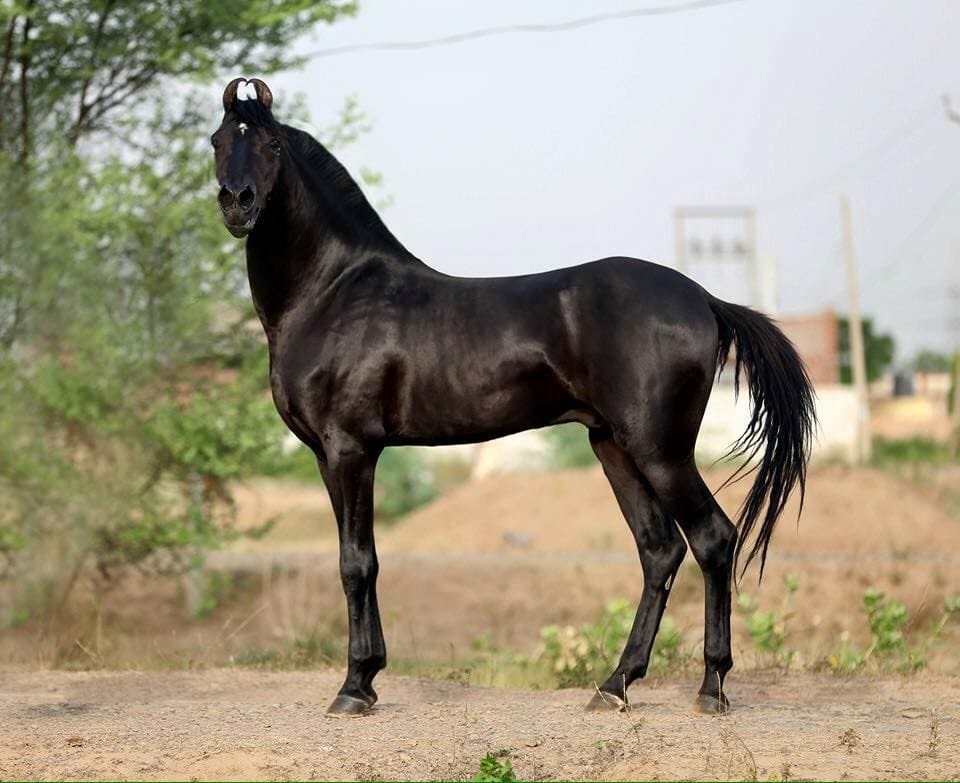
The Marwari horse traces its origins to the Marwar region of Rajasthan, India, where it has been a symbol of pride since the 12th century. Valued by Rajput kings and warriors for its endurance and bravery, the Marwari was a preferred mount in battles and ceremonial events. Its unique inward-curving ears and spirited nature made it a distinguished choice for royal and martial purposes. Over the centuries, the breed has continued to be celebrated for its elegance and versatility, transitioning from a warhorse to a prized show and ceremonial horse.
Kathiyawadi Horse
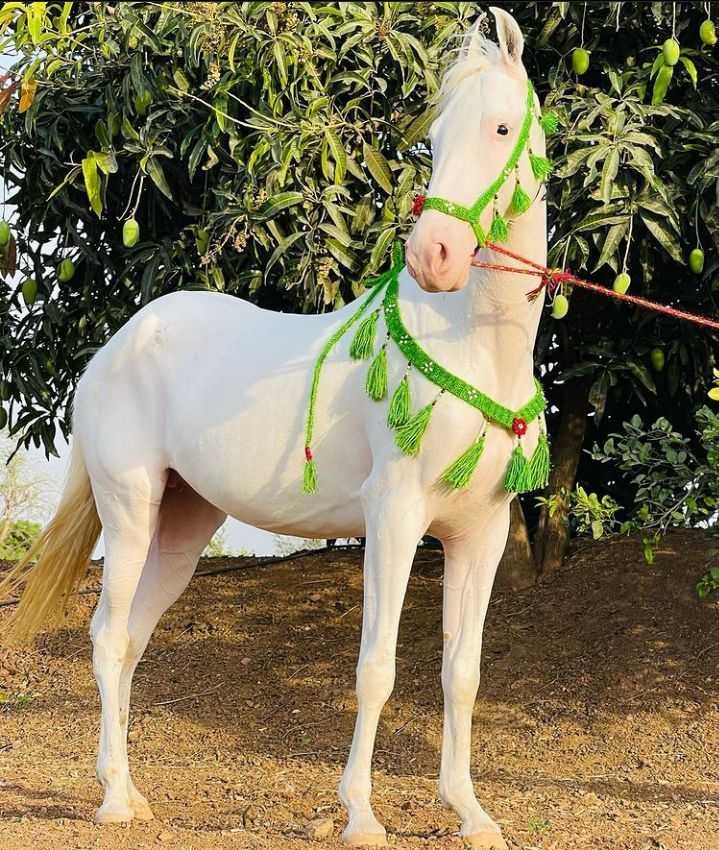
Hailing from the Kathiyawad region in Gujarat, India, the Kathiyawadi horse has a rich history closely tied to the region’s agricultural practices. Traditionally used by local farmers for plowing fields and transportation, this breed is renowned for its hardiness and reliability. Despite its smaller size, the Kathiyawadi horse has played a crucial role in sustaining the rural economy of Gujarat. Its adaptability to the harsh climate and its gentle temperament have cemented its place as a vital workhorse in the region.
Sindhi Horse

The Sindhi horse, originating from the Sindh region of Pakistan, has a diverse heritage influenced by Arabian and Turkmen breeds. This breed was historically valued for its strength and resilience, suited to the semi-arid environment of Sindh. Sindhi horses were traditionally used for agricultural work and as pack animals. Their ability to adapt to various terrains and their calm disposition made them indispensable in both work and local racing events. Today, the Sindhi horse continues to be valued for its endurance and versatility in rural and traditional settings.
Origins and Historical Context:
- Marwari: From Rajasthan, associated with Rajput heritage and ceremonial uses.
- Kathiyawadi: From Gujarat, used traditionally in agriculture and local transport.
- Sindhi: From Sindh, influenced by various breeds and suited for semi-arid regions.
Physical Traits:
- Marwari: Notable for its unique inward-curving ears and elegant build.
- Kathiyawadi: Characterized by a sturdy, compact build and smaller size.
- Sindhi: Known for a well-balanced and muscular build, medium size.
Temperament:
- Marwari: Energetic and courageous, ideal for ceremonial roles and sports.
- Kathiyawadi: Hardy and reliable, suited for agricultural tasks and transportation.
- Sindhi: Resilient and adaptable, good for both work and traditional events.
Modern and Traditional Uses:
- Marwari: Predominantly used for show and ceremonial purposes today.
- Kathiyawadi: Continues to be used for local work and farming in Gujarat.
- Sindhi: Employed in agricultural work and traditional events in Pakistan.

